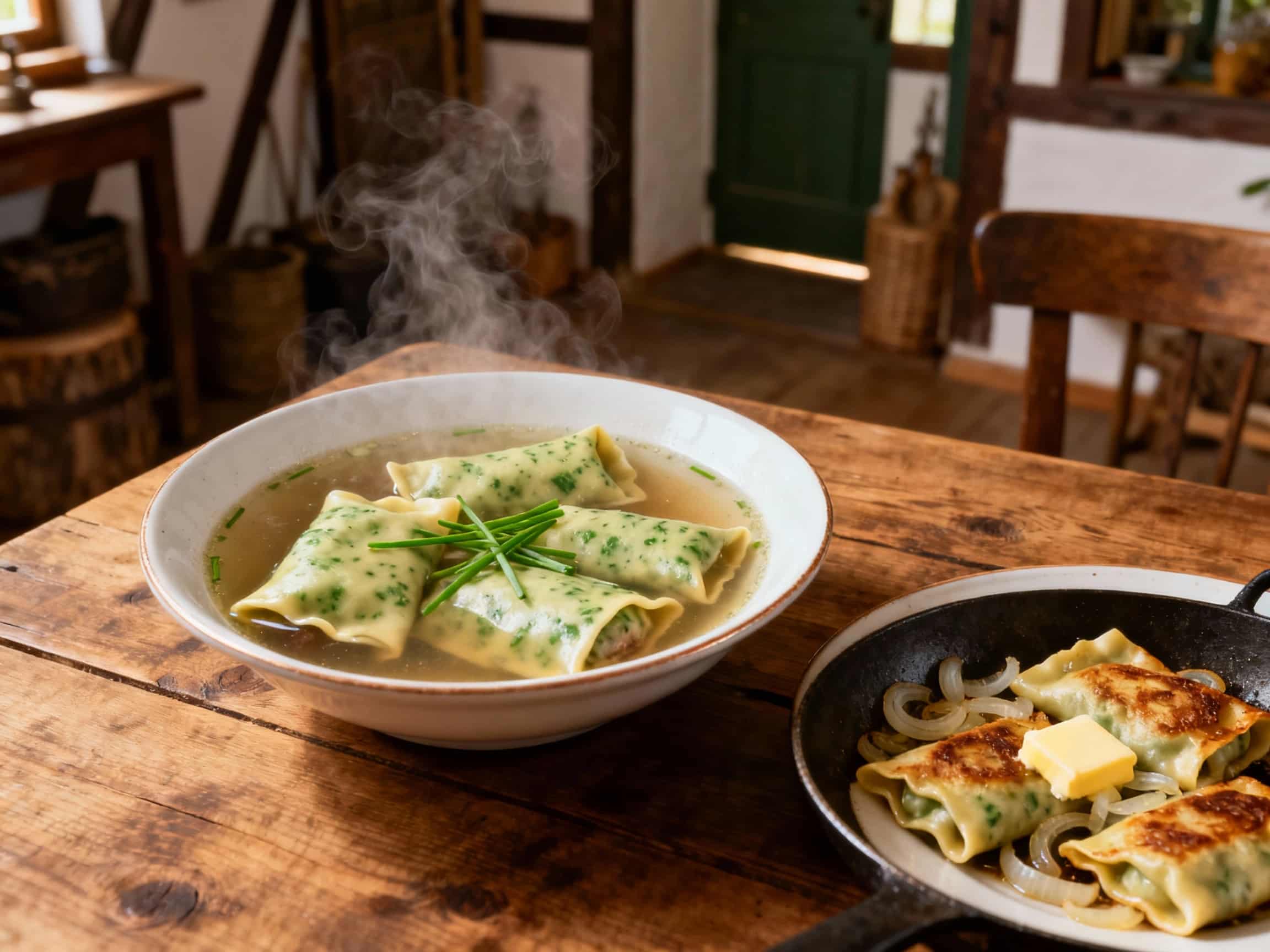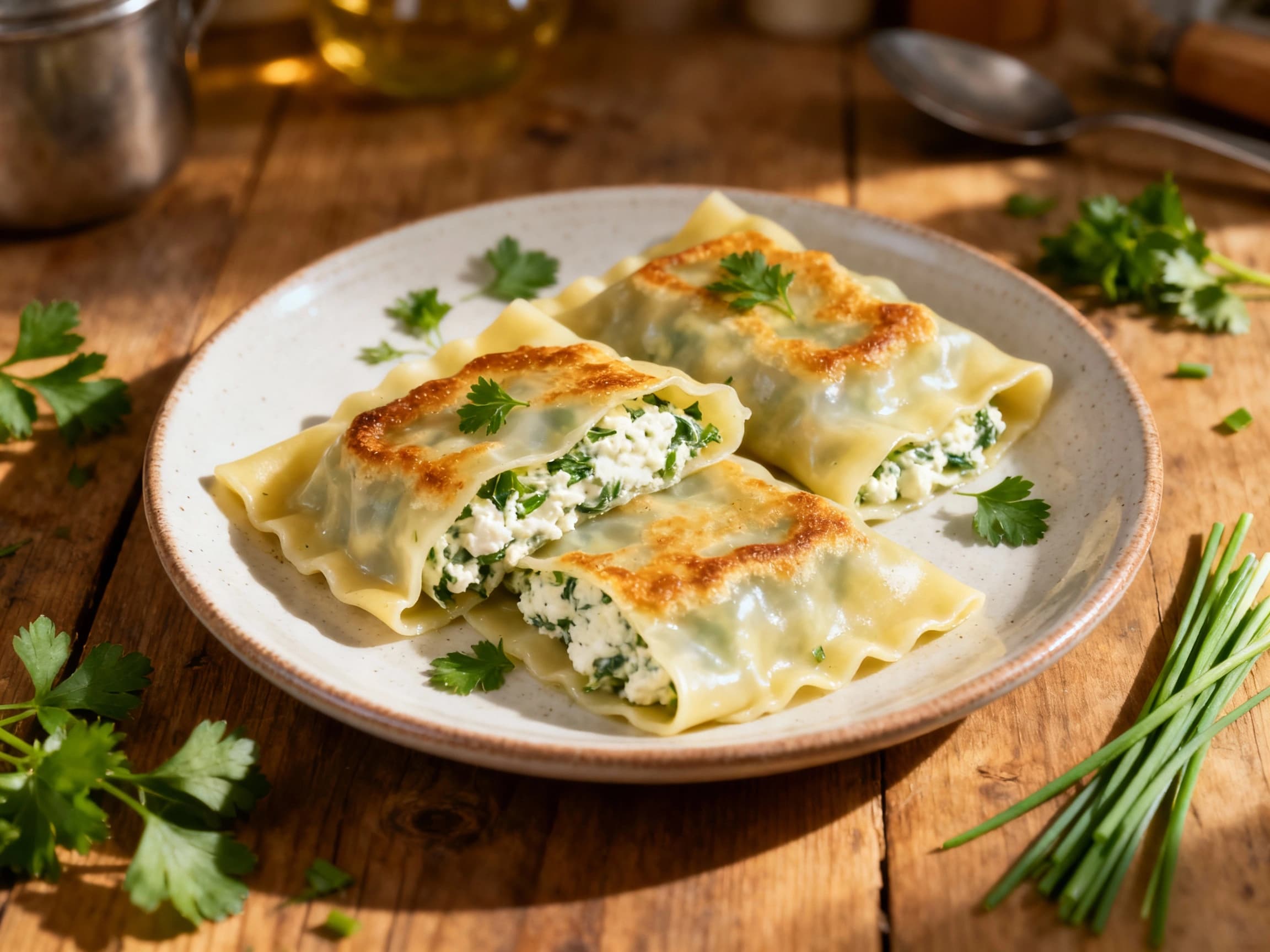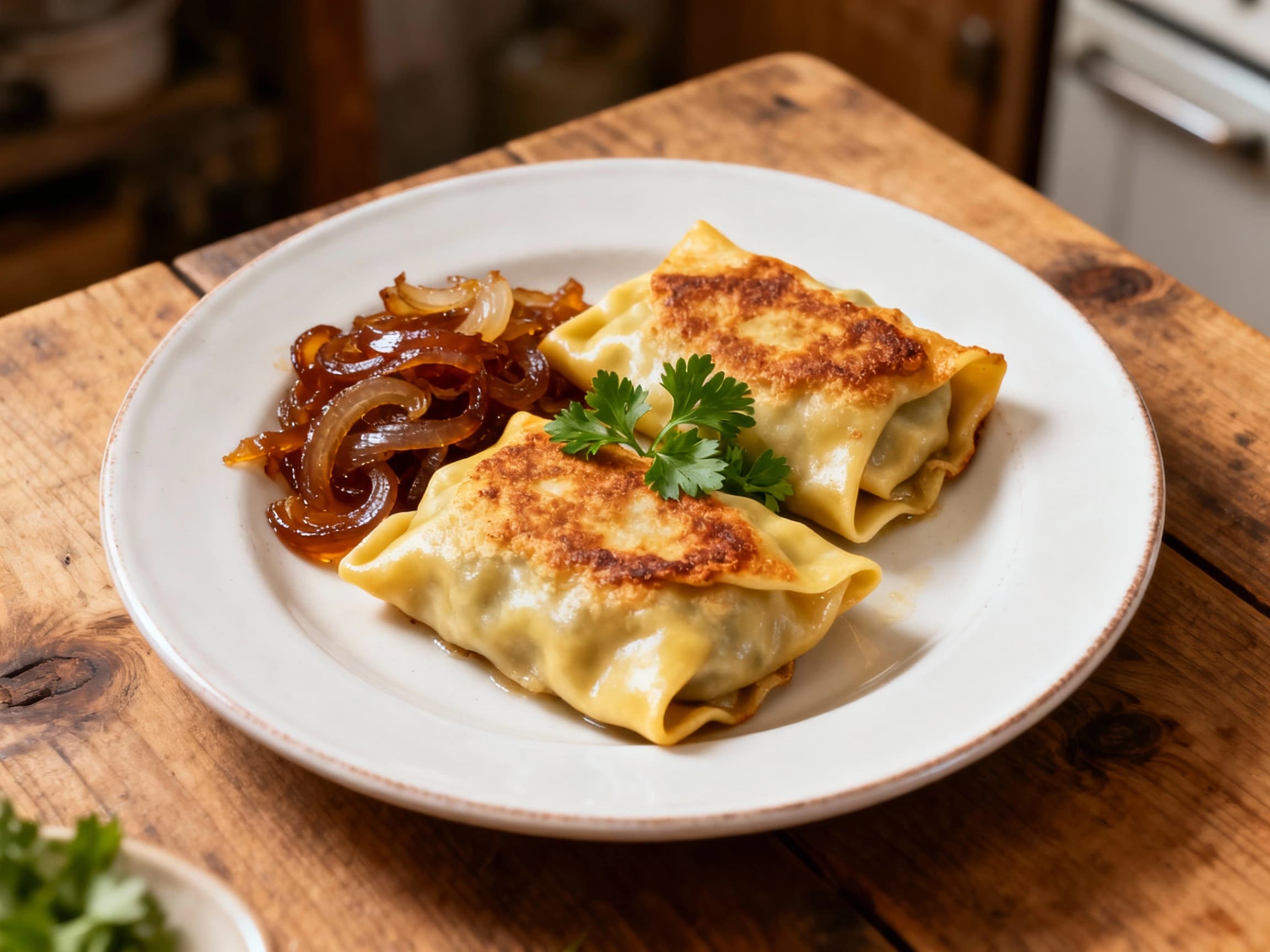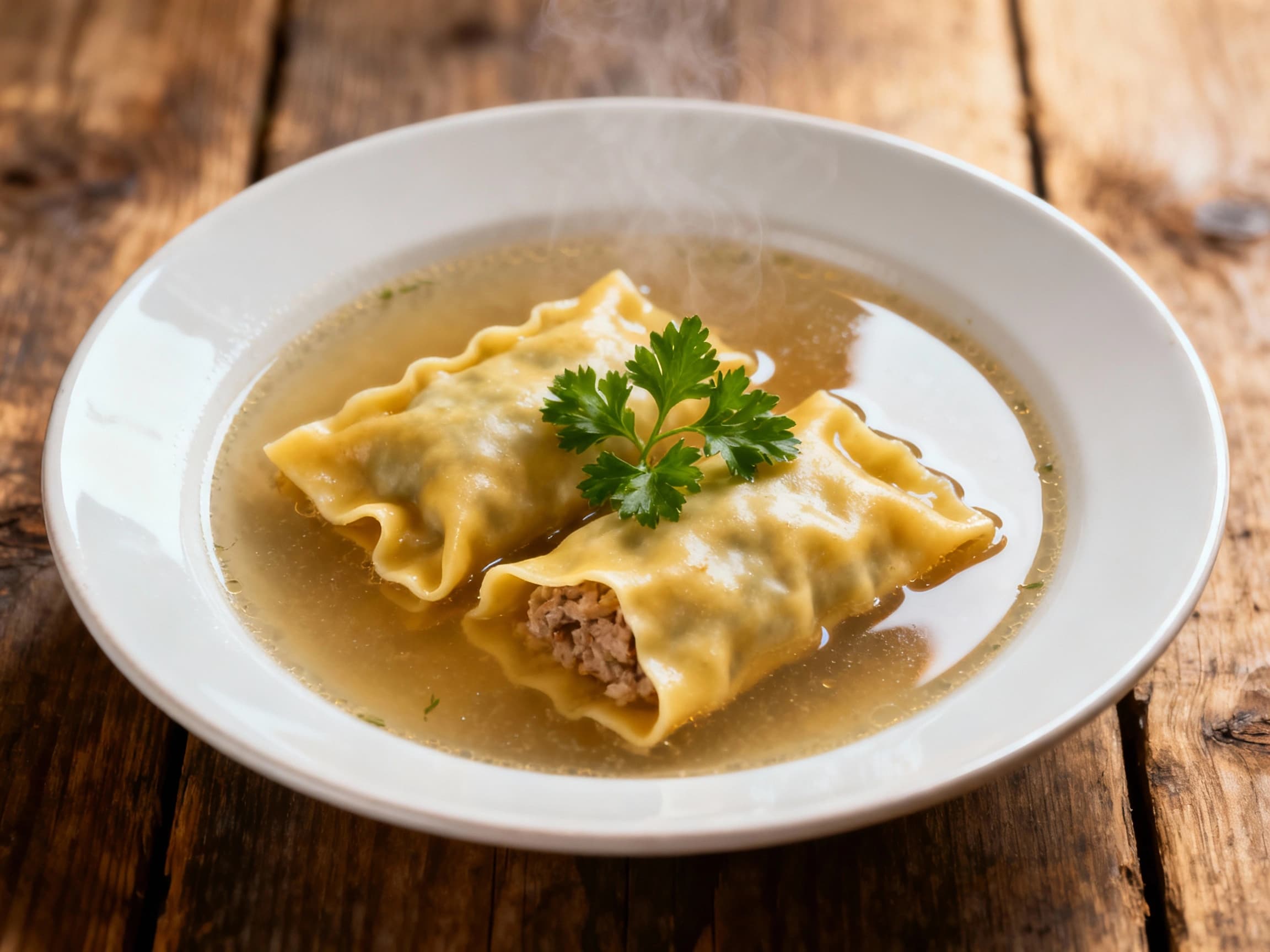
Maultaschen
Maultaschen
- Country
- Germany
- Region
- Swabia
- Recipes
- 3 Recipes
Dish information
Maultaschen, a signature dish of the Swabian region in southwest Germany, are large, rectangular pasta pockets filled with a savory mixture. Their origin story is often linked to the Cistercian monks of the Maulbronn Monastery during the medieval period, particularly around the 16th century. Legend has it that the monks created Maultaschen to disguise meat during the meatless days of Lent, hence their nickname "Herrgottsbscheißerle" (little God-deceivers). The traditional filling consists of minced meat (often beef or pork), spinach, bread crumbs, onions, and a blend of spices. These substantial parcels can be served in multiple ways: swimming in a clear beef broth (in der Brühe), cut into strips and sautéed with butter and onions (geschmälzt), or even as a side dish. Their versatility and hearty nature have made them a beloved staple in Swabian cuisine, embodying the region's culinary inventiveness and resourcefulness. The dish has evolved from a monastic invention to a widely cherished comfort food, enjoyed in homes and restaurants across Germany and beyond, a testament to its enduring appeal and adaptable preparation.
Timeline
The earliest documented references to Maultaschen appear, often linked to the Maulbronn Monastery.
The nickname "Herrgottsbscheißerle" emerges, referring to the monks' use of meat during Lent.
Maultaschen become a staple in Swabian households and regional cuisine.
The first official cookbook mentioning Maultaschen is published, standardizing some recipes.
Industrial production of Maultaschen begins, making them more accessible across Germany.
Culinary tourism in Swabia highlights Maultaschen as a regional specialty.
A European Union geographical indication status is sought for "Schwäbische Maultaschen."


